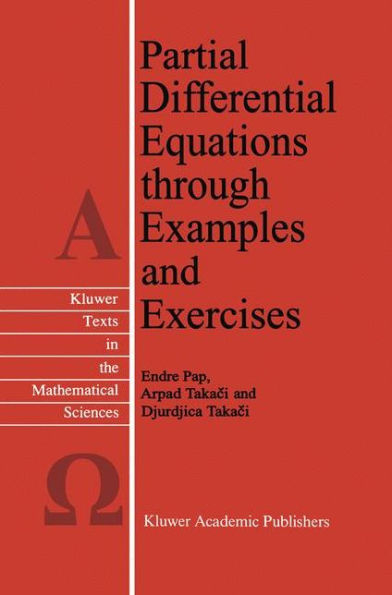Partial Differential Equations through Examples and Exercises
The book Partial Differential Equations through Examples and Exercises has evolved from the lectures and exercises that the authors have given for more than fifteen years, mostly for mathematics, computer science, physics and chemistry students. By our best knowledge, the book is a first attempt to present the rather complex subject of partial differential equations (PDEs for short) through active reader-participation. Thus this book is a combination of theory and examples. In the theory of PDEs, on one hand, one has an interplay of several mathematical disciplines, including the theories of analytical functions, harmonic analysis, ODEs, topology and last, but not least, functional analysis, while on the other hand there are various methods, tools and approaches. In view of that, the exposition of new notions and methods in our book is "step by step". A minimal amount of expository theory is included at the beginning of each section Preliminaries with maximum emphasis placed on well selected examples and exercises capturing the essence of the material. Actually, we have divided the problems into two classes termed Examples and Exercises (often containing proofs of the statements from Preliminaries). The examples contain complete solutions, and also serve as a model for solving similar problems, given in the exercises. The readers are left to find the solution in the exercises; the answers, and occasionally, some hints, are still given. The book is implicitly divided in two parts, classical and abstract.
1101630063
Partial Differential Equations through Examples and Exercises
The book Partial Differential Equations through Examples and Exercises has evolved from the lectures and exercises that the authors have given for more than fifteen years, mostly for mathematics, computer science, physics and chemistry students. By our best knowledge, the book is a first attempt to present the rather complex subject of partial differential equations (PDEs for short) through active reader-participation. Thus this book is a combination of theory and examples. In the theory of PDEs, on one hand, one has an interplay of several mathematical disciplines, including the theories of analytical functions, harmonic analysis, ODEs, topology and last, but not least, functional analysis, while on the other hand there are various methods, tools and approaches. In view of that, the exposition of new notions and methods in our book is "step by step". A minimal amount of expository theory is included at the beginning of each section Preliminaries with maximum emphasis placed on well selected examples and exercises capturing the essence of the material. Actually, we have divided the problems into two classes termed Examples and Exercises (often containing proofs of the statements from Preliminaries). The examples contain complete solutions, and also serve as a model for solving similar problems, given in the exercises. The readers are left to find the solution in the exercises; the answers, and occasionally, some hints, are still given. The book is implicitly divided in two parts, classical and abstract.
54.99
In Stock
5
1

Partial Differential Equations through Examples and Exercises
404
Partial Differential Equations through Examples and Exercises
404
54.99
In Stock

Product Details
| ISBN-13: | 9780792347248 |
|---|---|
| Publisher: | Springer Netherlands |
| Publication date: | 10/31/1997 |
| Series: | Texts in the Mathematical Sciences , #18 |
| Edition description: | 1997 |
| Pages: | 404 |
| Product dimensions: | 6.10(w) x 9.25(h) x 0.24(d) |
From the B&N Reads Blog
